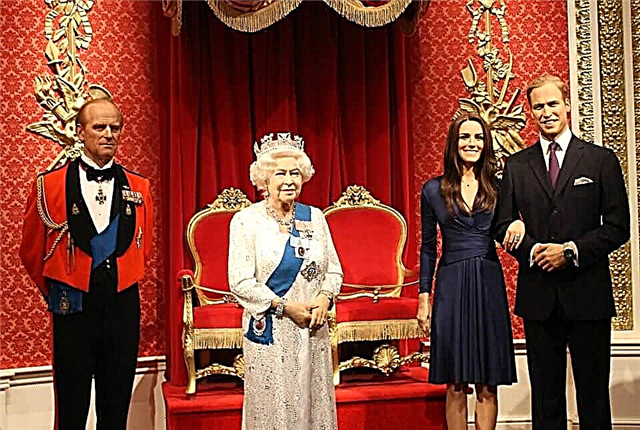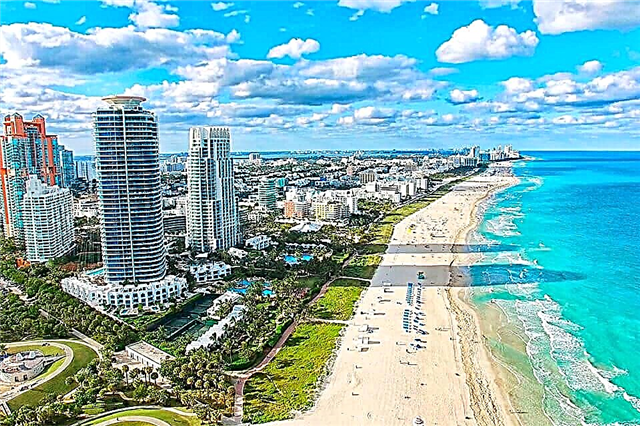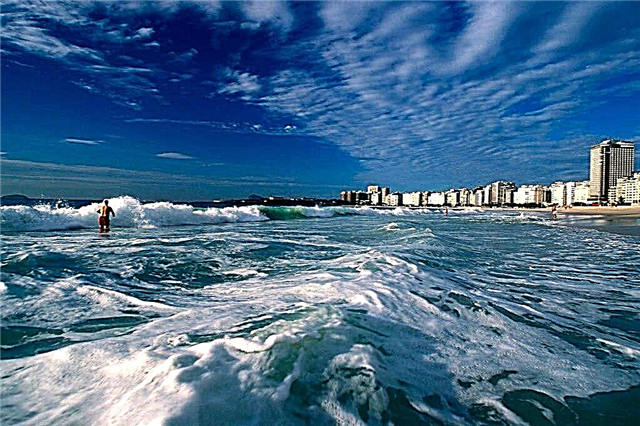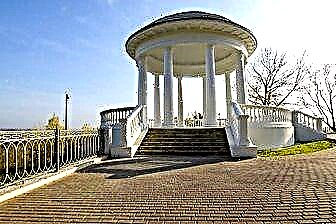Kirov and the region provide the curious traveler with ample scope for exploration. In addition to the richest natural resources, this territory has a powerful cultural potential - in addition to the famous Dymkovo toy throughout Russia, more than ten folk crafts have been developing here over the centuries.
In the town itself, the number of museums literally rolls over - a variety of collections are available to tourists: both classic historical ones and dedicated to traditional crafts, paleontology, fine arts, as well as chocolate and ice cream. One of the most picturesque places in Kirov is the small Spasskaya Street. Connoisseurs of church architecture will find many churches built in different styles in the city.

The best hotels and hotels at affordable prices.
from 500 rubles / day
What to see and where to go in Kirov?
The most interesting and beautiful places for walking. Photos and a short description.
Alexander Garden
The oldest park in the city and region, founded in the first half of the 19th century after the visit of Alexander I (then Kirov was called Vyatka). It is still adorned with a rotunda, an entrance portico and a fence built in the 1840s. These objects are executed in a classical style and are among the best examples of landscape architecture. There are many sculptures and art objects built in the Soviet and modern times in the park.

Green embankment
The embankment runs along the Vyatka River. It offers a beautiful view of the river, city quarters and Dymkovskaya Sloboda. The alleys are densely planted with trees and ornamental shrubs, which turns the coast into a real green oasis and a corner of tranquility in the middle of the city bustle, very popular with the townspeople. The embankment was named after the famous writer A. Green, a native of the Vyatka province.

Memorial complex "Eternal Flame"
The complex is located on the high bank of the Vyatka. It is an architectural ensemble dedicated to the memory of soldiers who died in the Second World War, and consists of the Eternal Flame itself, a 12-meter obelisk and two semicircular symmetrical walls with bas-reliefs. The memorial was erected in 1967. In the 1940s, more than 600 thousand people went to the front from the Kirov region. A third of them were killed, 200 soldiers were awarded the title of Hero of the USSR.

Spasskaya street
The street has existed since the end of the 18th century. Since then, its boundaries have not changed. The pedestrian part of the alley is paved with cobblestones, it runs along the picturesque historic mansions. In the center of the street there are wrought-iron lanterns, benches and flowerpots. Most of the historical buildings date back to the 19th - early 20th centuries. You can walk along Spasskaya Street in just 10 minutes, as its length is short. One of the central sculptures is an old car, near which people like to be photographed.

Assumption Trifonov monastery
Monastery of the 17th century, founded by St. Trifon Vyatsky. The architectural ensemble of the monastery is rich in valuable monuments of federal significance. The oldest buildings: Cathedral of the Assumption of the Virgin and Nikolskaya Gate Church, erected in the 1680-90s. The rest of the temples, as well as monastic buildings, towers, abbot's chambers and other buildings were built in the 18th-19th centuries.

Vyatka Preobrazhensky Monastery
The women's monastery, founded at the beginning of the 17th century with the blessing of Tsar Alexei Mikhailovich. The main temple of the monastery is the Transfiguration Church, erected in 1696 in the style of the Russian pattern. Two more churches were built in the 19th century, at the same time residential buildings appeared, in which apartments were located during the Soviet era. Monastic life resumed in the 1990s after a long hiatus.

Spassky cathedral
The cathedral was built during the reign of Catherine II on the site of an old wooden church. After the Revolution, like many others, it was closed and placed inside living quarters, having previously destroyed the bell tower and the dome. After the handover to believers in 1992, restoration work began in the building, which continues to this day. But, despite this, the temple is functioning, and services are regularly held in it.

Alexander's Church
Catholic church, built in 1903 at the request of the exiled Poles who lived in the Vyatka province. During the First World War, a Polish school and library worked under him. The services continued until 1933, despite the fact that most of the parishioners left for their homeland after the Revolution. In Soviet times, the building housed a veterinary institute. In the 1990s, the church was restored and an organ hall was placed in it.

Church of the Icon of the Mother of God "Sign"
The stone church was erected at the end of the 18th century. A century ago, a wooden church stood in its place, which burned to the ground. Only one icon "The Sign" was saved from the burning building. It was in her honor that a new temple was built, which has survived to our times. The appearance of the building mixed features of classicism and baroque. The three-tiered bell tower decorated with columns looks especially picturesque.
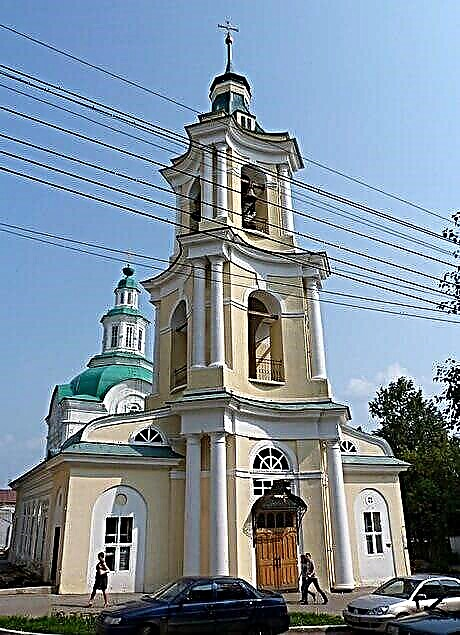
Church of the Nativity of John the Baptist
The temple was erected in 1723 using architectural techniques more characteristic of wooden architecture. Twice - in 1775 and 1899, the building was rebuilt, adding features of contemporary contemporary styles to its appearance. In Soviet times, the church housed a planetarium. After the return of the Russian Orthodox Church in the 1990s, the ensemble was restored: the walls were re-painted, the facade was repaired, and the side-chapels were consecrated.

Cathedral of Seraphim of Sarov
The church was built at the beginning of the 20th century in the Art Nouveau style, but with clearly visible notes of pseudo-Russian style - a rather rare combination for religious buildings. Today its domes and hipped roofs are painted black. Thus, architects send observers to wooden architecture (after a few years, the logs from which the buildings were built turned black from damp). During the Soviet period, the temple not only survived, but also significantly expanded its area.

Kirov Drama Theater
Theatrical stage, founded in Kirov in 1877. It should be said that performances have been regularly held in Vyatka since 1815, gathering fans of dramatic art. Basically, then preference was given to the classical works of Russian authors. The stone building of the theater was built in the 1930s in the style of classicism in its Soviet version. In 2006, a museum was opened at the institution.

Kirov Puppet Theater
The puppet theater was founded in 1935 by a group of enthusiasts. At first, the performances were not popular, and more than once the question of closing it arose. The stage received a separate building only in 1957 - the second floor of one of the oldest mansions in Kirov was allocated for the performances. In 2009 the theater moved to a new building with two auditoriums and modernly equipped puppetry workshops.

Sculptural composition "Family"
The composition "Family" is a monument to the Dymkovo toy. It is performed in the traditional manner typical of this technique. The sculptural group consists of figures of a man playing the accordion, a child, a woman with a baby, as well as a cat and a dog. The monument was erected at the expense of the Megafon company. There is a sign that if you sit on a bench next to the characters, you can find family happiness.

Vyatka Paleontological Museum
The museum was established in 1994. Its main exhibits are the skeletons of pareiasaurs discovered in the 1990s near the town of Kotelnich, which are of great scientific value, since they are not found anywhere else in the world.Since 2013, the institution has been actively developing the Museum of the Future program aimed at introducing interactive technologies that can diversify the traditional exposition.

Vyatka Art Museum named after Vasnetsovs
The institution started working in 1910 on the basis of the Vyatka art circle. After the Revolution, it was transferred to state support. Initially, all collections were located on the territory of the mansion of the local merchant I. Repin; in 1992, a new building was erected nearby, where part of the exposition was moved. The funds contain more than 20 thousand exhibits: painting, sculpture, graphics, objects of decorative and applied art. In the gallery you can see masterpieces of famous artists: I. E. Repin, K. P. Bryullov, I. K. Aivazovsky.

"Gallery of progress"
Museum of Contemporary Art, which exhibits contemporary works of the XX-XXI centuries. Collections of painting, graphics, music, video are collected here. Part of the Gallery of Progress is the Rock and Roll Museum, where you can learn about the history of the genre and famous performers. In addition to exhibitions, the institution hosts lectures, concerts, theme nights, discussion clubs, and a design studio for young artists.

Kirov Regional Museum of Local Lore
The museum was founded in the 1860s. The reason was the exhibition of 1837, which was visited by the heir to the throne, Alexander II. After the success of the exhibition, the city authorities started thinking about creating a permanent collection. In 1864, the emperor donated minerals from the funds of the Mining Institute to the future museum. The main building is located on Spasskaya Street, on the territory of the former shopping arcade, built in the 19th century by the project of F.M. Roslyakov.

Museum and Exhibition Center "Diorama"
The opening of "Diorama" was timed to coincide with the 60th anniversary of the October Revolution. The center is located in a building, the main facade of which is made in the form of a waving flag with bas-reliefs of a sailor, a worker and a peasant in military uniform - the main driving forces of the Bolshevik coup. The central exhibit of the museum is a panoramic painting depicting the events of 1917.

Museum "Dymkovo toy: history and modernity"
The exposition of the museum is dedicated to the traditional craft of the Vyatka province - the Dymkovo toy. It consists of more than 700 items (about 250 are exhibited at the same time). In the halls you can see both classic, familiar to everyone, products of Dymkovo masters, as well as new ones, distinguished by their original performance. In addition, the museum often hosts exhibitions devoted to other areas of decorative and applied art.

Museum "Vyatka folk arts and crafts"
The exposition is located on the territory of a historical building - the first stone civil building in Vyatka, erected in the 18th century. The museum opened after the restoration of the building in the 1970s. Its collection consists of works of folk art and applied art. Here you can see clay and wooden toys, lace products, textiles, burlap and much more. For those who wish, master classes are held on modeling from various materials.

A.S.Grin Museum
The personal museum of the famous writer was founded in 1980 in honor of the 100th anniversary of the author. As you might guess, the exposition is dedicated to the life and work of A. Green. The halls recreate the atmosphere of his childhood home, many exhibits are dedicated to his hobbies, searches for a creative path, difficult years and the formation of a personality. The main place in the collection is given to the work "Scarlet Sails".
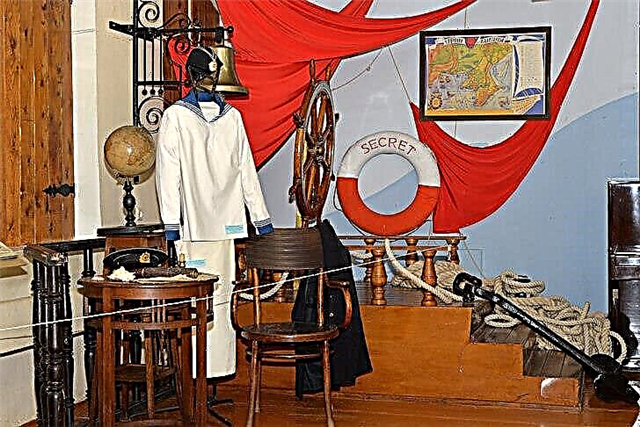
Museum of K. E. Tsiolkovsky, aviation and cosmonautics
Museum with a unique collection, created in 1988 in the building where the family of K. Tsiolkovsky lived for several years. The institution is interesting not only for its exposition - visitors of all ages come here to listen to entertaining lectures about Space, the conquest of space, the life and works of the great scientist, scientific discoveries that made space flights possible.

House-Museum of M.E.Saltykov-Shchedrin
The writer M. Saltykov-Shchedrin spent several years in exile in Vyatka. All this time he lived in a modest wooden house. It was here that in 1968, after restoration, the first museum named after him was opened in the USSR. In 1997, the exhibition was renewed with original items from the 19th century. Today, in three exhibition halls one can observe the atmosphere of those times. The collection of the museum consists of paintings, books, documents, interior items and furniture.

Museum of the history of chocolate "Criollo"
A private museum that opened in 2014. Today it is the only one in the Kirov region covering the chocolate theme. The institution was named after the Criollo cocoa variety. The exposition consists of various chocolate figurines. There is also a confectionery mini-factory at the museum, where you can see the process of making delicacies and taste the final result.

Museum of the history of ice cream "Artico"
The museum collection is dedicated to the history of one of the most popular delicacies. Many exhibits are unique, they can be seen only here. A standard excursion consists of a tour of the exposition located in two halls and a visit to the laboratory, where you can observe the production or take part in a master class. The museum has a cafe offering visitors over 100 types of ice cream.

The mansion of the merchant T.F. Bulycheva
The building of the early 20th century, reminiscent of a Moorish palace, was erected by the architect I.A.Charushin by order of T.F.Bulychev, a merchant and owner of the Vyatka-Kama Shipping Company. The architecture of the building is unique, especially for this region: in the appearance of the facade you can see features of the Arabian style, Art Nouveau, Manueline, Gothic - in a word, real eclecticism at its best.

Botanical Garden
The park is located in the city center. It was founded in 1912 as a private garden. They worked hard on the landscape design, planting a lot of decorative and exotic plants, building greenhouses and artificial ponds. After the Revolution, the territory was transferred to the university. Today in the garden there are more than 500 species of trees, shrubs, flowers and herbs brought from Asia, the Caucasus, North America, Siberia and the Far East.

Park named after S. Kirov
The park appeared in Soviet times. Workers of Kirov factories and students worked on its improvement, who later became its main visitors. Today it is a refined green area with paths and elements of landscape design: sculptures, figured fences, alleys, flower beds. The place is intended for relaxation and walking.

Vyatka river
Vyatka originates in Udmurtia and flows through the territory of the Kirov region and Tatarstan, flowing into the Kama. From it comes the historical name of the region - Vyatka province. The waterway is navigable up to Kirov (700-1000 km from the mouth). Many species of commercial fish are found here: bream, catfish, pike, perch, pike perch, roach. On Vyatka you can go kayaking and rafting, which is what water tourists use.



